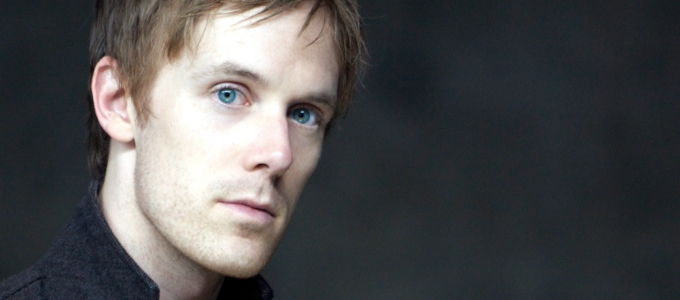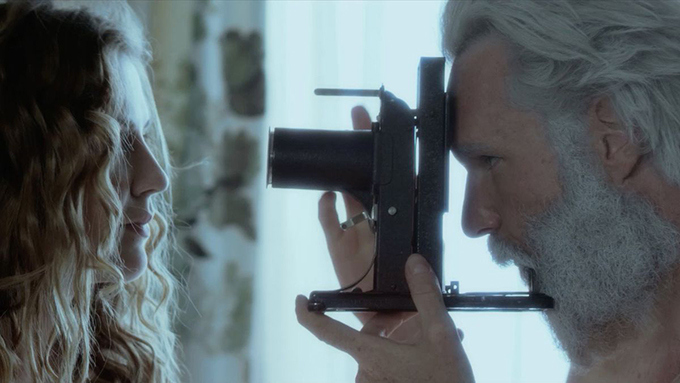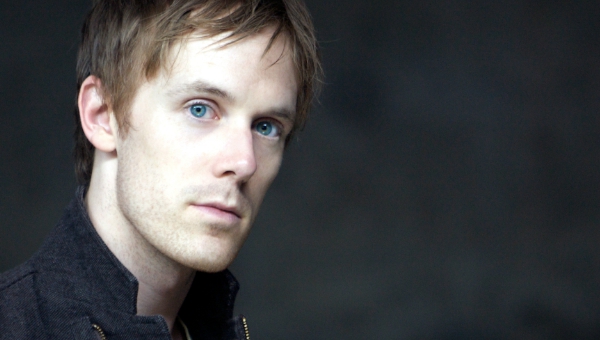
EADWEARD, which was shown at the Cambridge Film Festival last Sunday, is the first feature by the Canadian actor-director Kyle Rideout. The bulk of the film covers a brief but intense period in the life of pioneering English-born photographer Eadweard Muybridge (1830–1904), when his work on motion studies was supported by the University of Pennsylvania and he began to move from clothed to nude subjects. The film, whose uncluttered design and imaginative visual style belie its small budget, also boasts a magisterially eccentric performance by Michael Eklund as the photographer.
Stephen Watson: How did you first get involved with Eadweard Muybridge’s story?
Kyle Rideout: I was an actor in a wonderful play about him called Studies in Motion, written by Kevin Kerr and produced by the Electric Company Theatre. I experienced firsthand how so many of the audience had never heard of this eccentric historical figure. I was baffled that no one had told this story before. Both I and my fellow actor Josh Epstein wanted to remedy that. Every night doing the show, Josh and I kept imagining it as a film. We began talking with the Electric Company team members about how we wanted to pursue this. They had great trust in us to tell this story so we optioned the play from them and then began adapting the project. We tried to pull as much of Kevin’s work as possible and made the screenplay more linear in the storytelling.
SW: Did the subject matter make it easier to finance?
KR: No. If anything it probably made it more difficult. EADWEARD had all the pitfalls that make shooting an indie film very challenging. We had goats, dogs, cats, horses, children, multiple locations, we climbed a mountain for one location, lots of extras, visual effects and the cherry on top was that it was a period film, meaning period costumes, locations, props, everything. But what we did have was unbelievable support from Vancouver. We were able to put together beautiful locations, an incredibly dedicated crew, a superb cast, with Michael Eklund leading the ship.
SW: On the subject of Michael Eklund, he seems a natural fit for the role of Muybridge!
KR: Both Josh and I always wanted Eklund to play Eadweard. We spoke with him in LA as he was promoting the film THE CALL (2013), and talked at length about the character of Eadweard, and the head injuries he sustained from the stagecoach accident which turned his hair white. As Eklund prepared for the role, he dyed his beard and hair and changed his posture. Eventually it felt strange to address him as ‘Eklund’ on set and it was a natural transition to simply call him ‘Eadweard’.

SW: Sara Canning as Muybridge’s wife Flora also contributes hugely to the film.
KR: Sara really blew us away in a chemistry read with Eklund; we were all excited and knew right away she was Flora.
SW: In addition to being the director and co-writer, you were the film’s production designer. How did you balance your own vision of the film with the usual demands for historical fidelity?
KR: It was surprisingly very balanced. There wasn’t ever an option on the table to spend money so we had to be innovative. With that said, I wanted this film to be as true to his life as possible, to the real Eadweard Muybridge. In the writing phase, Josh and I travelled to the University of Pennsylvania where Eadweard took his motion study photographs. We spent days poring over his cameras, letters, and his equipment. We brought photographs and measurements of his equipment back to the props team to recreate. I remember one instance where I discussed with the head of props, Tonielle Quinn, how we could make the lenses on his 24 cameras cheaper. We came up with the idea of using ornate copper peppermills, and sawing them in half.
SW: The film culminates with a scandalous murder trial resulting from problems in the Muybridges’ marriage. In reality, these events predated most of his pioneering work on photographing movement by some years. Did you feel that the rearrangement of the events of Muybridge’s life allowed you to get to some kind of larger truth about his work?
KR: Both the breakdown of his marriage and the trial were very profoundly devastating events in Eadweard’s life that changed him. We wanted to show both those worlds in his later work: the incredible genius as well as the ghosts from the past that were etched into his life forever.
SW: At the end of the film, we get a glimpse of Edison’s Kinetoscope, an early version of what would become motion pictures. What is your feeling about Muybridge’s own role in the development of cinema?
KR: Of course Muybridge played a very large role in paving the way towards cinema. In the film we show a device he invented called a zoopraxiscope, that projected silhouettes of moving images against a wall. This public showing was what some say is the first moving picture. Eadweard’s work and zoopraxiscope was an inspiration for Edison.
httpvh://youtu.be/7VAds0GH_8E

